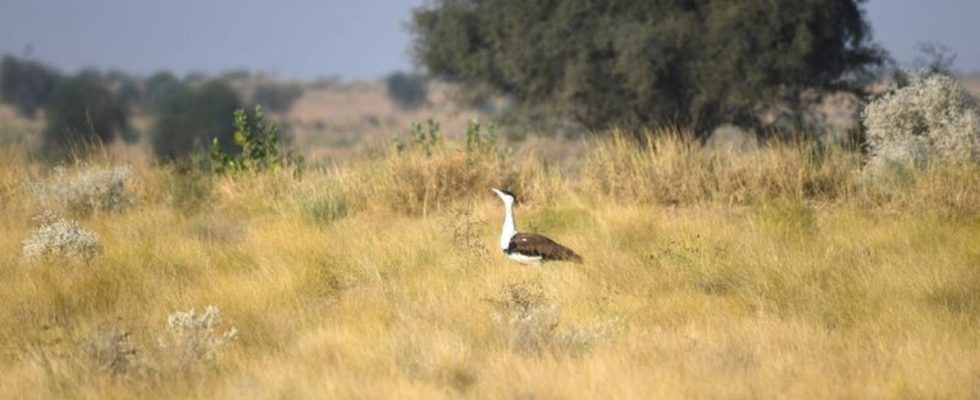Animals
Power lines threaten rare birds in India
Rarity: According to the WWF, there are only around 200 Hindu bustards left. photo
© Radheyshyam Bishnoi/ERDS Foundation/dpa
Wind and solar energy are central to the energy transition. But in the most populous country, India, this type of power generation has negative consequences for extremely rare birds.
Power lines are so dangerous for the birds because they often see them too late, explains Sumit Dookia from the GGS Indraprastha University in New Delhi and the ERDS Foundation, which works to protect the Hindu bustards (Ardeotis nigriceps) in the Jaisalmer district. The birds’ eyes are on the sides of their heads, which limits their vision. In addition, with their weight of 15 to 18 kilograms, they could only avoid obstacles slowly. Volunteers from his organization repeatedly find injured and killed birds with broken bones and burns, said Dookia. In addition, animals are attacked by stray dogs and cats.
Only 200 pieces left
According to the environmental organization WWF, there are only around 200 of the majestic birds left. They live in India and the neighboring country Pakistan. Just five decades ago there were more than 1,200 of them in India alone, according to the Wildlife Institute of India.
For several years now, the highest Indian court has been dealing with animals and power lines. But the Ministry for Renewable Energy and electricity companies argue that laying the lines underground is too expensive and that there are sometimes technical difficulties. At least companies are now increasingly building new power lines in districts where Hindu bustards are less frequent, says Dookia. In addition, existing lines would have reflectors that would make it easier for the birds to see.
In addition, the Environment Ministry, the government of the state of Rajasthan and the Wildlife Institute of India are trying to raise Hindu bustards together in a breeding program, which they want to release into the wild in around 20 to 25 years.
But environmentalist Dookia is concerned about the future of the animals. Because their living space continues to shrink – in view of agriculture, irrigation canals, industrialization and mining. “It is a shy bird that wants to stay at least a kilometer away from people,” says Dookia. “And that is becoming increasingly difficult.”

